
Our next trip was to the Addo National Park, our all time favourite national park. With it’s closest entrance just 30 minutes from Port Elizabeth, Addo is probably the second most popular park in South Africa – with good reason. It’s the only home of the ‘Big Seven’ in the world to my knowledge! It includes the Big Five – elephant, lion, leopard, buffalo and rhino, plus the southern right whale and the great white shark. In addition you can see a host of other species, ranging from small meerkats to the majestic kudu, and just about everything in between.
The official National Parks map of Addo (click on map to enlarge)
Addo has an interesting history. Sir Percy Fitzpatrick (author of Jock Of The Bushveld) was instrumental in establishing citrus farming in the Sundays River valley. Some time later, farmers in the area petitioned the government to aid them in eradicating the elephants which were destroying crops and irrigation systems. In 1919 the government employed Major P.J. Pretorius, a well known big game hunter, to exterminate them. Over the next few years he killed over 120 elephants until a public outcry forced him to stop. By 1931 there were only 11 elephants left according to some sources, hiding in an area of dense vegetation called Harvey’s Bush. The government proclaimed the area a reserve and the Addo Elephant Park was born. Today there are over 600 elephants in the park. Read More Addo History
We arrived on the Wednesday morning, having driven round via Paterson. Unfortunately, caravans and trailers are not allowed to enter via the Matyholweni gate at Colchester (off road caravans and trailers towed by 4x4s are permitted). It adds some 70km to the drive from Port Elizabeth, but it’s a good road and there’s lots of game viewing along the way.
On the way we stopped at the Nanaga Farm stall at the intersection of the N2/N10/R72 for something to nibble. Nanaga has been a must stop on the road east from Port Elizabeth for over 40 years. Today it’s a sprawling complex boasting a restaurant, the farm stall (now a large shop), a fresh fruit market, a service station and fast food outlets.
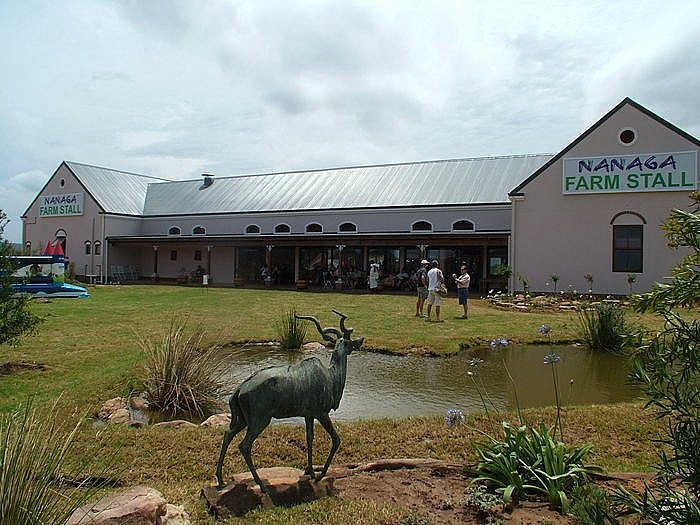
Cravings satisfied, we continued round to the Addo main gate and went straight to the camping area. A little while later my brother and his wife arrived and set up on the site next to us. It was good to see them again.
The camping sites at Addo are all gravelled, separated by spekboom hedges and many are well shaded by trees. I must warn you that the ground is extremely hard! I battled to knock our tent pegs in with a rubber mallet, it just bounced off. I normally take a 4 pound hammer with us but for some reason this trip I didn’t pack it, I’ll never do that again! Luckily a kind fellow camper came to the rescue and lent me his. One of the joys of camping is the wonderful people we meet, campers really are a special breed.
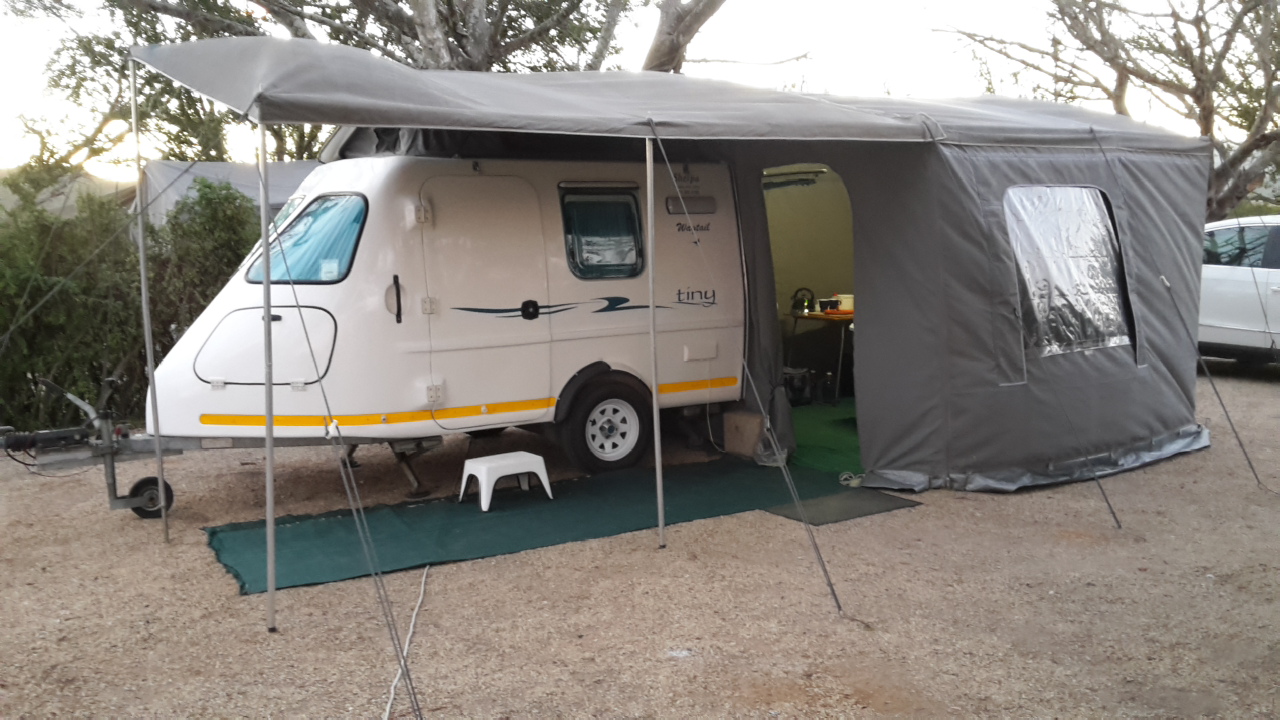
Wagtail all set up
Something special about Addo is the abundance of bird and animal life in the camp ground. There is always something to see. We were blessed with visits by a bush buck and her calf and cursed by mischievous vervet monkeys. They are so quick and any food left open will be snatched. We left our zipped up food bag in our closed tent when we went for a game drive. The little devils got under the side of the tent, unzipped the bag and emptied the contents. There was food everywhere but luckily nothing broken. They even ate most of a box of Lindor chocolate balls! I hoped that they’d all have stomach aches that night. From then on we put everything into Wagtail before we went out.
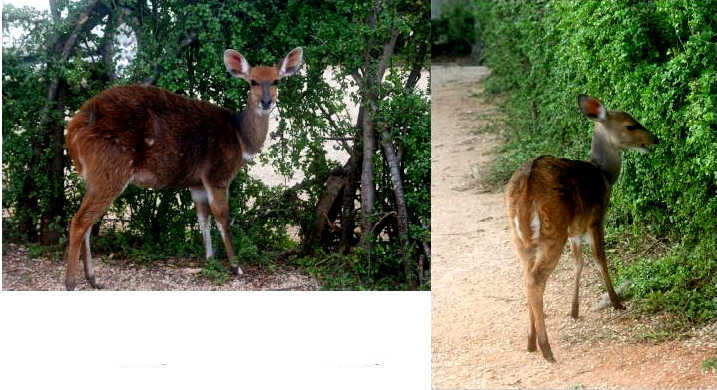
Bushbuck & calf nibbling the spekboom hedges
Addo is very dry around the main camp at the moment, they last had rain there five months ago (January’21). As a result, most of the animals have moved to the newer section in the south, closer to the coast where they’ve had more rain. We saw kudu, some buffalo at Carol’s Rest (including the cutest furry calves) and a few elephants on the loops near main camp but not much else. Usually on hot days there are large numbers of elephants at the waterholes. We often spend hours there watching them, especially the youngsters as they wallow, wrestle and play in the water. Once we watched a huge tortoise come to drink, right in the middle of the herd. A little guy tried to chase him away by splashing him and squealed with frustration when he took no notice!
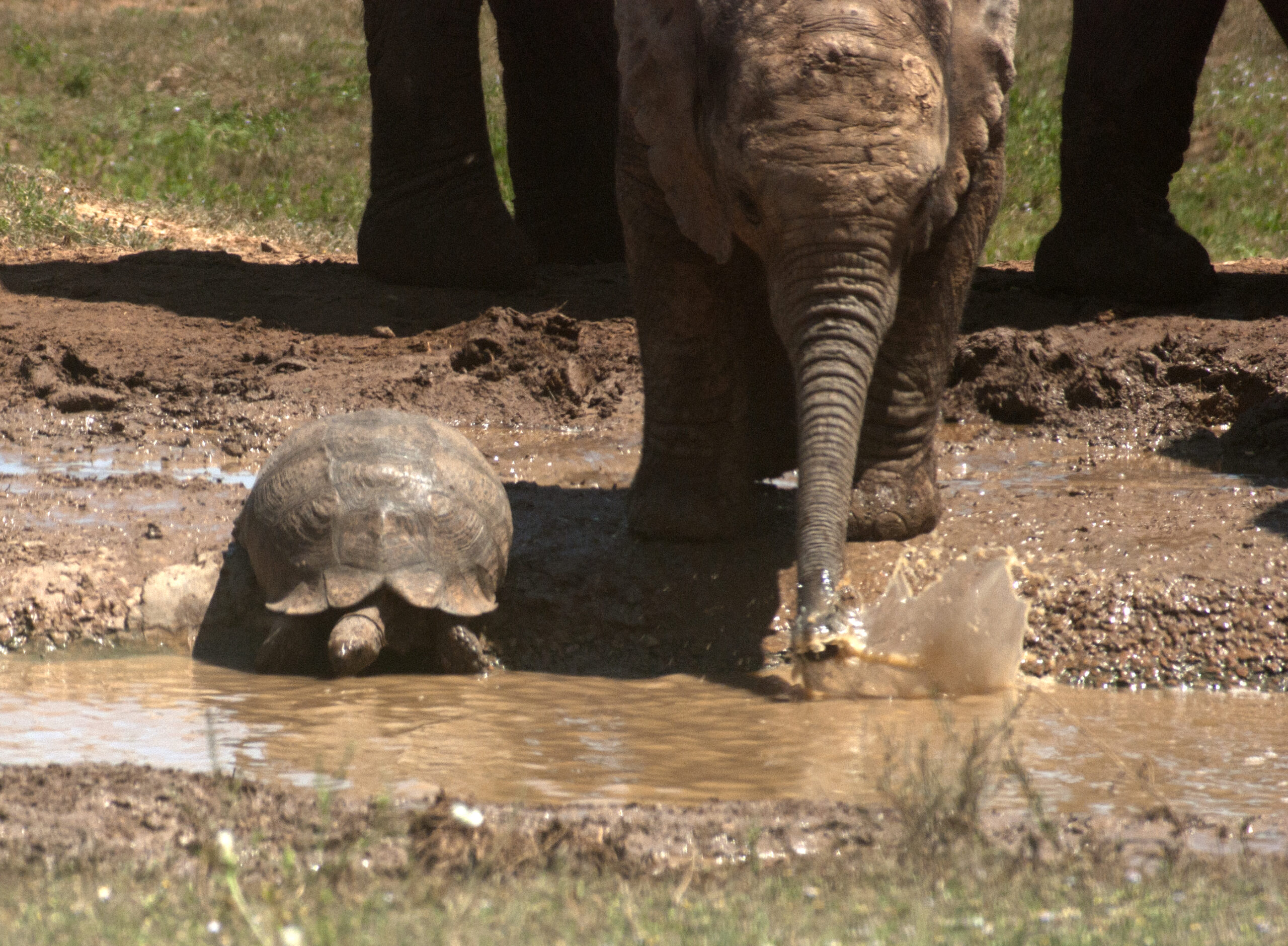
Go away!!
Interestingly, for many years it was thought that the elephants’ main source of food at Addo was the spekboom (elephant bush in English). Now it is known that they actually eat a wide variety of plants. We have watched them eating thorn bushes and even prickly pear. Shortly after the new southern section was opened, which was full of prickly pear, my brother asked a ranger how they would eradicate it. Her reply was ‘the elephants will’. Soon thereafter we were parked near the junction of Harvey’s and Ngulube loops (37 & 38 on map). Completely surrounded by elephants , we were amazed to see them ripping off entire prickly pear leaves and stuffing them into their mouths oblivious to the thorns. Today there’s no prickly pear left!
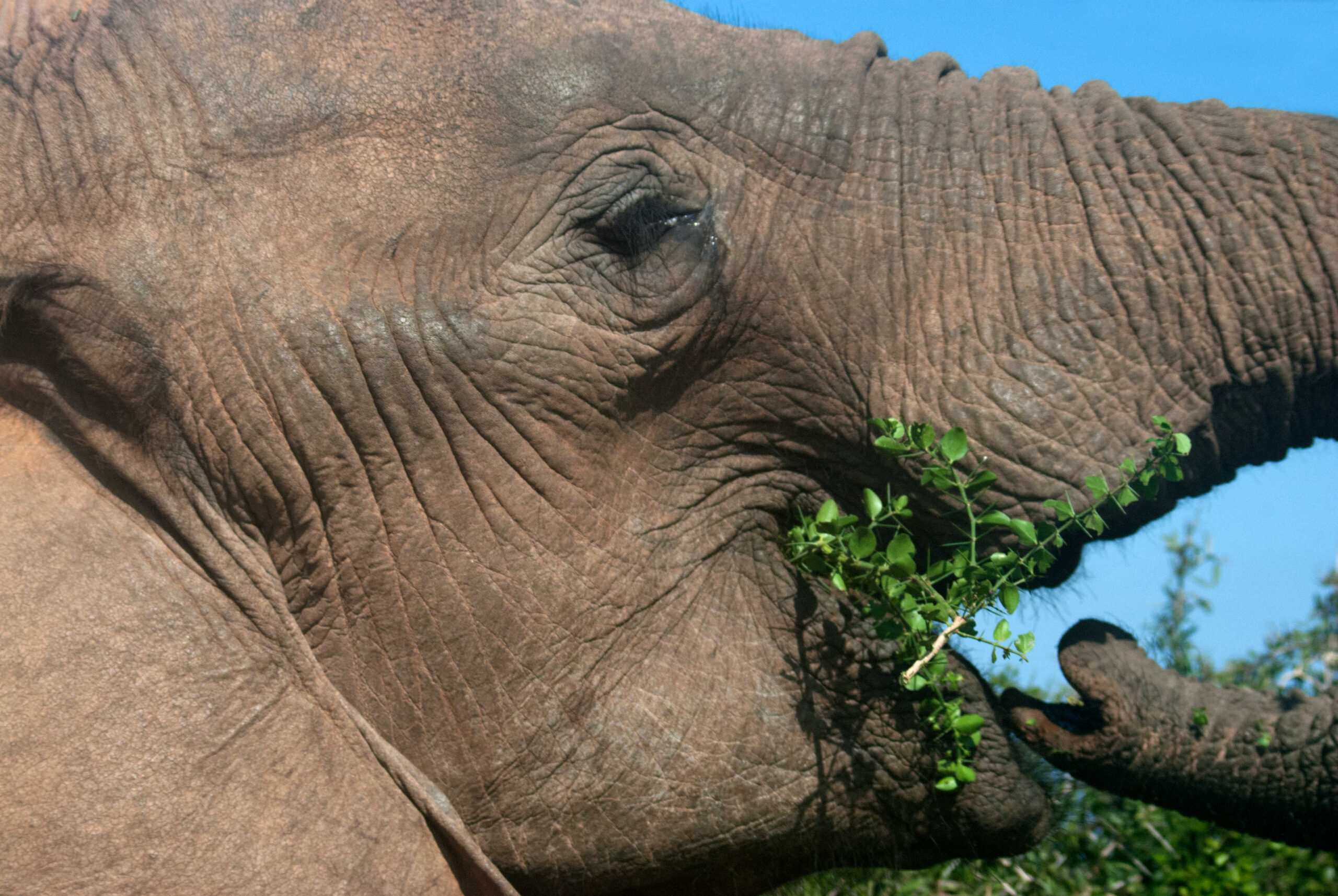
A thorny meal
Click on map to enlarge
Thankfully, when we spent time in the south there was lots to see. Near Arena dam on the through road from Addo to Nanaga (see map above) we came across the largest herd of zebra we have ever seen. We were excited to see red billed oxpeckers among them, a first for us in Addo. We also saw lots of red hartebeest, kudu, elephant, warthogs and eland. Each day we went to Jack’s Picnic Site to eat and have a pit stop. Jack’s is a delightful place to stop for breakfast, lunch, tea, or even just to stretch your legs. There are separate shaded sites, each with a wooden table and benches and a built in braai. Each day we were visited by friendly bulbuls, boubous, a Cape robin and francolin. The birds are tame and some are liable to help themselves from your plate if you turn your back.
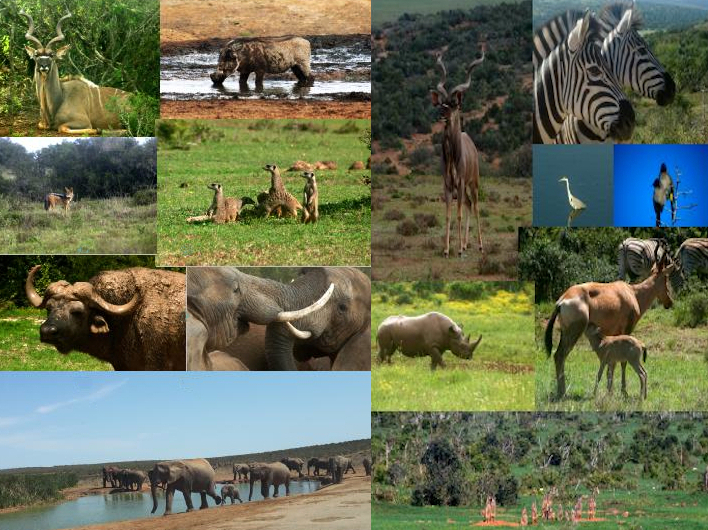
All too soon it was time to pack up and head home. Nothing quite refreshes and renews one like time in the bush. We are so privileged to live in such a beautiful country, with plenty of awesome places to escape to.
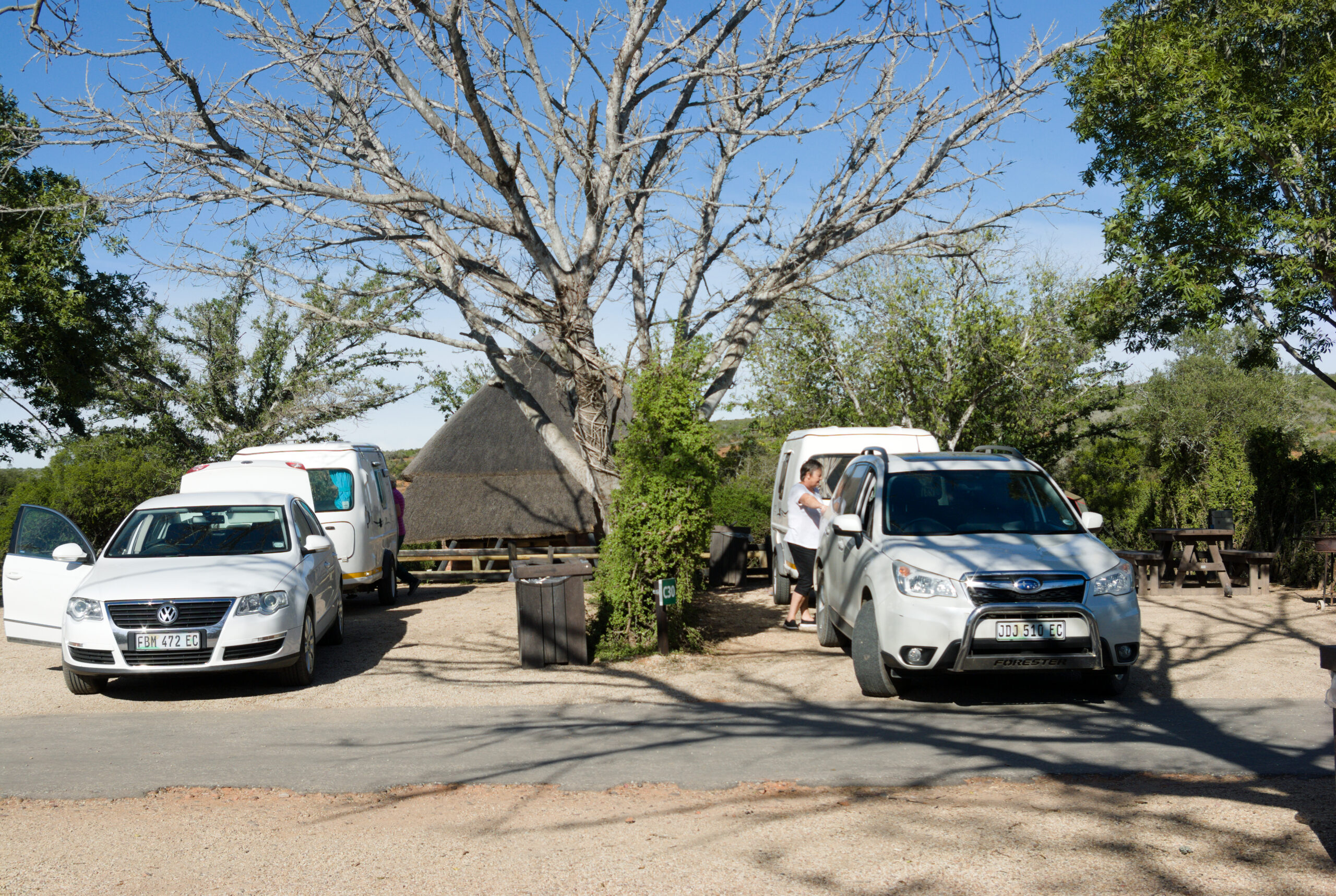
All packed and ready to leave
Enjoyed this post? Click here to get updates on our travels. Please feel free to share your comments and suggestions in the Comment section below. We’d love to hear from you.
Addo maps courtesy of SANPARKS
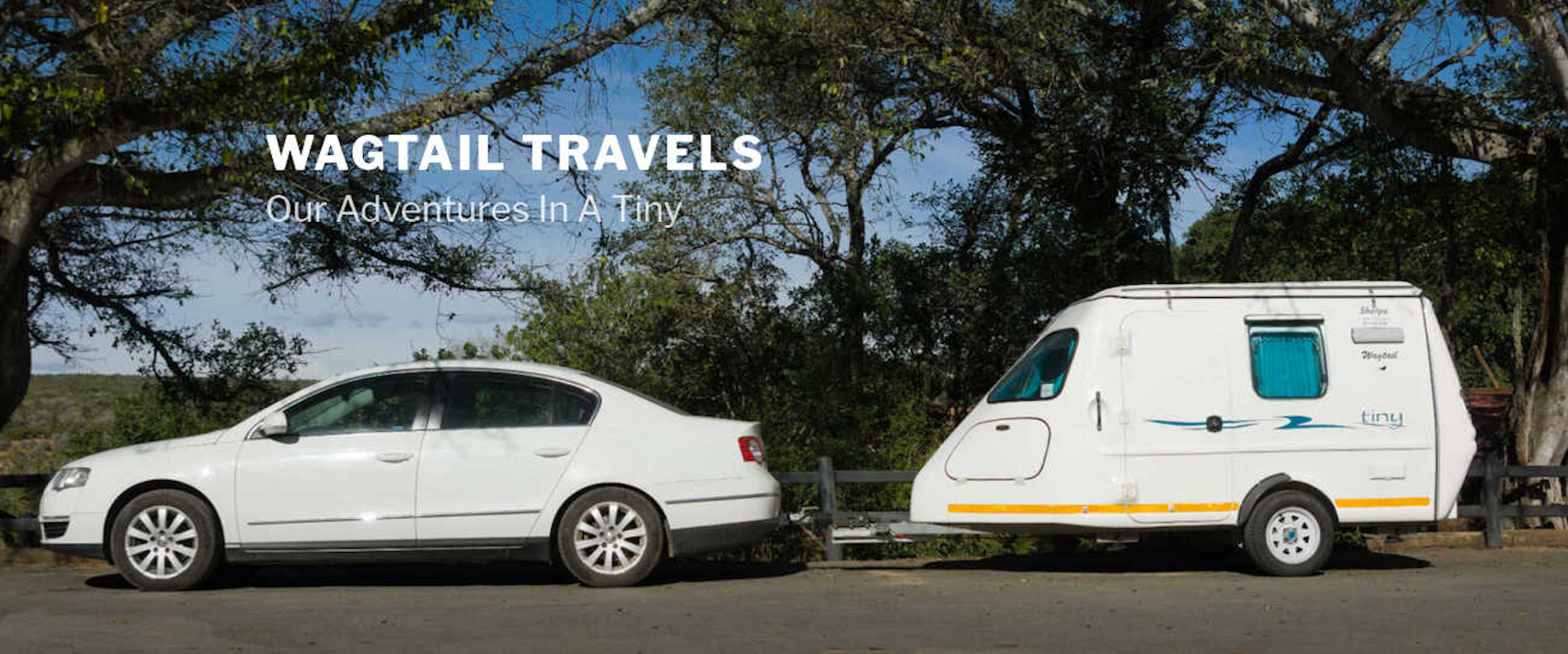
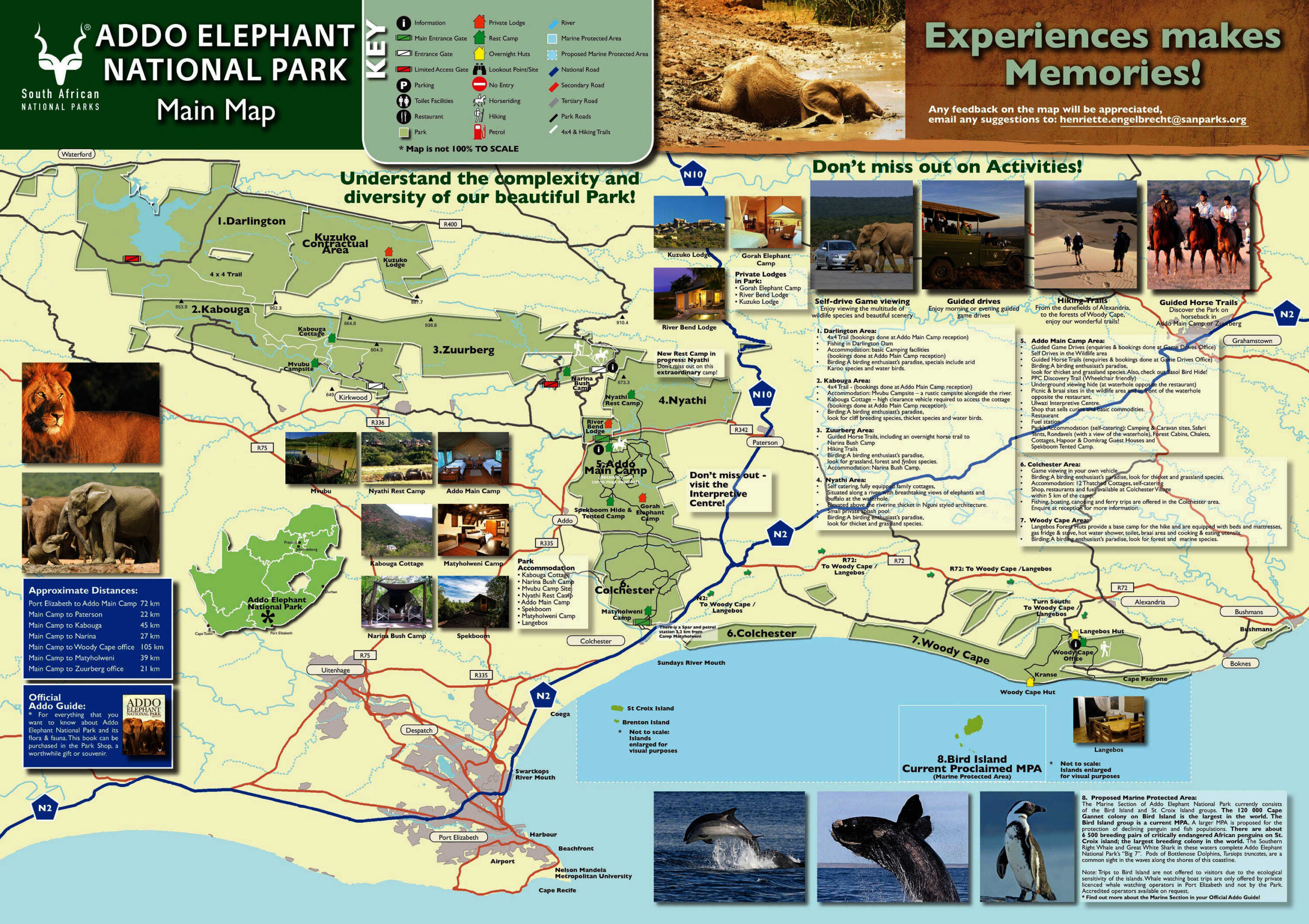
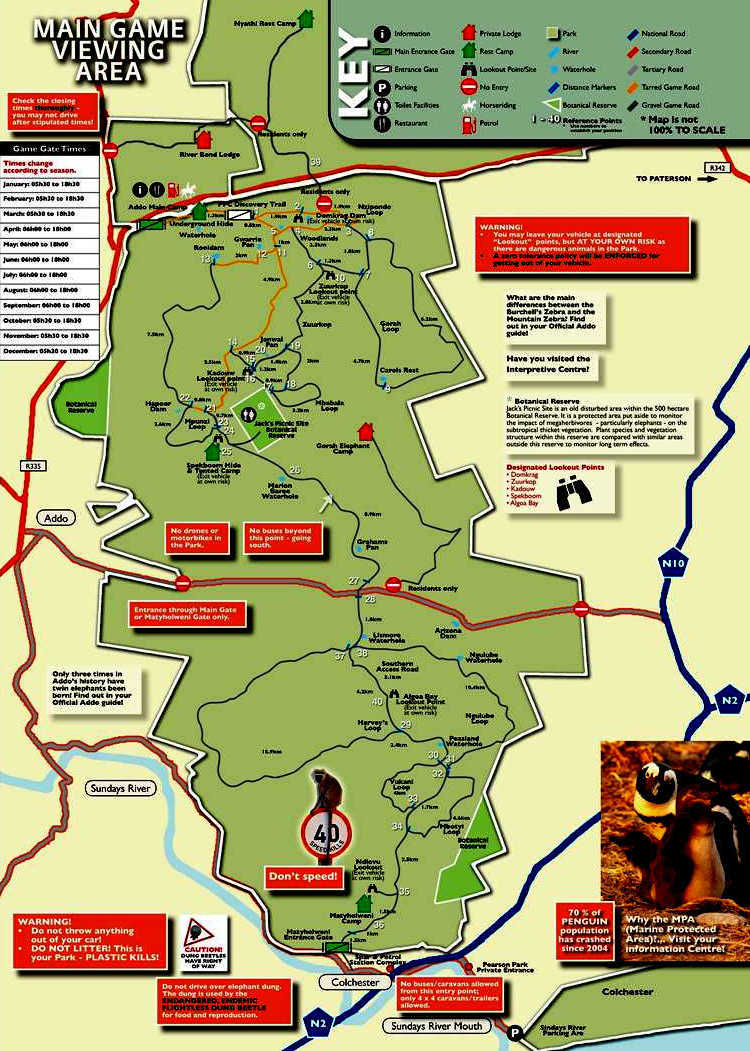
One Reply to “Addo National Park”